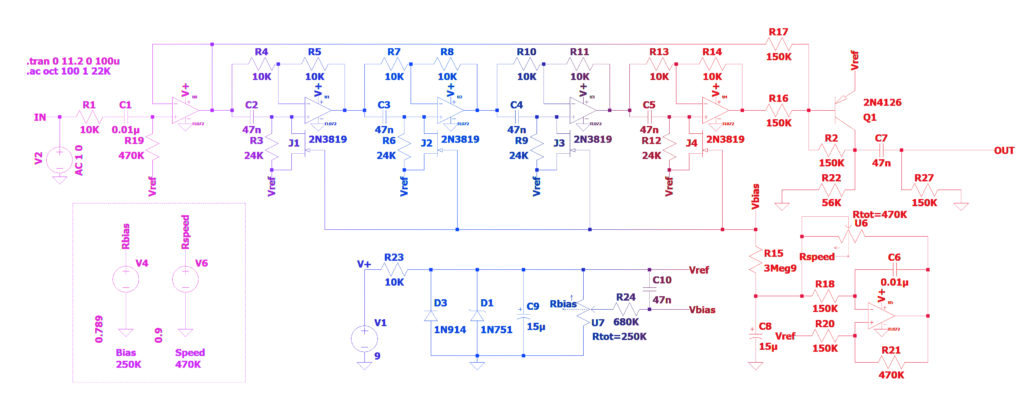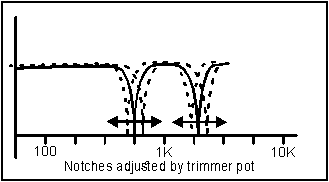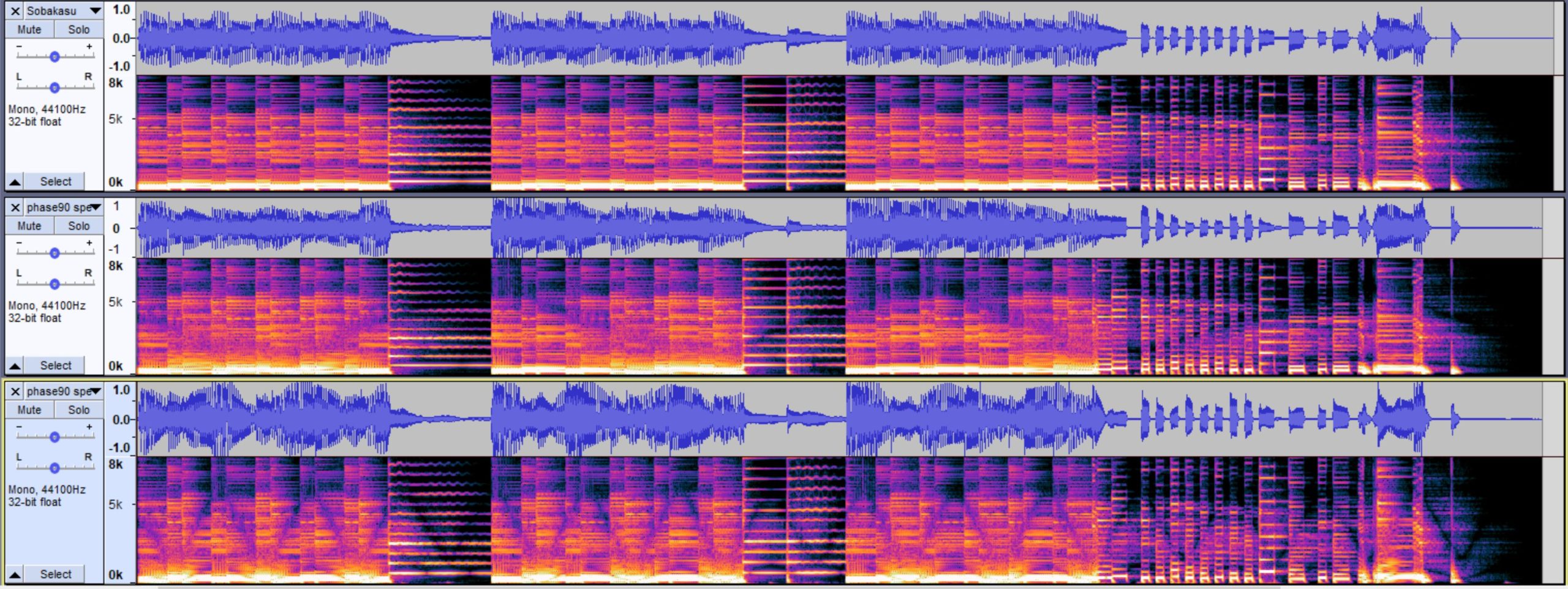
Set phasers to wubwubwub~
I am not a big fan of star trek.
This time I’m simulating the MXR Phase 90 though by the time of writing this post, I’ve already pivoted towards building the MXR Phase 45. The reasons for this are purely practical, I didn’t want to order too many JFETs and the chances of matching a pair of JFETs are much higher than matching the quad required by the Phase 90. Here are links to the web resources that I found helpful.
I’ll keep this post short, here is the clean WAV file used:

The Phase 90 has 2 controls: Speed and Bias.
Bias is controlled with an internal trimmer pot, it controls bias voltage going to the JFET gates which set the frequency at which the notches are formed. The electrosmash article explains this in depth. Simply put, the notches are formed by “destructive interference” when superimposing 2 waves in anti-phase. There are 2 notches as there are 2 pairs of phase shift stages which are in anti-phase.
Speed control controls the frequency at which the LFO (low frequency oscillator) oscillates, this oscillating signal is used to oscillate the bias on the JFET gates. This has the effect of oscillating the notches in frequency. This is the phaser effect.

The spectrograms above show the effect of the speed control clearly. Notice the areas where the signal is removed, it looks like a black sine wave. Do you see? These are the oscillations of the notches discussed before. In the second set, the speed pot is set to 50% and the notches oscillate slower hence visually we note a longer wavelength. Do you see? In the third set, with speed pot at 90%, the wavelength is much shorter. Do you see?
Note the increase in speed of phaser effect between the two tracks below:

Bias was set to 75% and the lowest frequency of the notches reaches 700Hz, resulting in a bassier sound as the phaser effect does not extend to the lower end.

At 78.9%, the frequency drops to 160Hz, this gives a more balanced sound as the low end is now phasing as well.
The trimmer pot adjustment in the Phase 90 maxes out quickly above 80% to converge to 60Hz and also drops out quickly below 60% at which point the notch frequency goes stratospheric into the 10KHz range. This makes the pot largely only usable for 1/5 of its range, you hear this echoed a lot in online forums where they speak of the “sweet spot” for biasing trimmer pot with the Phase 90. I would be inclined to use a 10-turn trimmer in this case, to maintain good precision of adjustment within this sweet spot. There is also incentive to lower the pot value and add passive resistors to ensure the potentiometer maintains relevance across its range.

The phaser effect is harder to spot visually here as the lower frequencies are heavily populated but we see that the low end is indeed included in the phaser range now. Listen to the simulated audio track below.
I’ve learnt a lot more in drafting and debugging this circuit, and I will be creating a JFET matcher and then a Phase 45 pedal in the future. This post is done now~

“Before Me you are a slug in the sun. You are privy to a great Becoming and you recognize nothing. You are an ant in the after-birth.
It is in your nature to do one thing correctly: before Me you rightly tremble. Fear is not what you owe Me, Lounds, you and the other pismires. You owe Me awe.”
— Mr D.